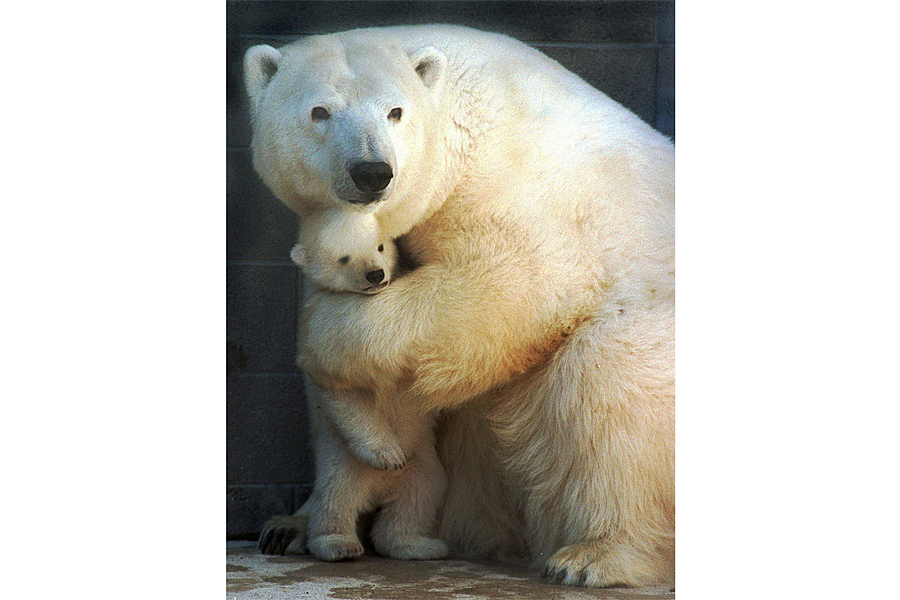Appeals court protects polar bears in Alaska
Loading...
To the praise of conservationists nationwide, a federal appeals court has upheld a federal plan to protect 187,000 square miles of Alaska’s northern coast, a vast habitat for vanishing polar bears.
The 9th Circuit Court of Appeals overturned Monday a lower court victory for the state of Alaska and fossil fuel lobbyists, who sued US Fish and Wildlife Services for its Polar Bear Recovery Plan, which was drafted six years ago. The plaintiffs argued that the federal agency overstepped its boundaries and that its oversight was too extensive.
According to conservation scientists, this reversal is a big win. Scientists say that if global warming trends continue, the world’s polar bear population will diminish by a third in the next 35 years.
“This is a critical decision for polar bears and the issue of climate change,” Brendan Cummings, a lawyer for the Center of Biological Diversity, told Bloomberg Business.
“But it’s not an absolute prohibition on activity ...” he added. “And as a practical matter, the US Fish and Wildlife Service rarely sees a project they don’t like.”
Soon after the polar bear was designated as an endangered species in 2008, Fish and Wildlife Services drew up a plan that involves protecting an offshore region of Alaska’s North Slope – the sea ice on which polar bears hunt and migrate. As of then, the population of polar bears in the disputed regions fell to under 1,000.
But in 2013, the state of Alaska and the Alaska Oil and Gas Association, as well as a coalition of Alaskan indigenous groups, sued the federal government, calling the plan an overreach because FWS lacked scientific evidence that proves certain areas of the 187,000 square miles are active habitats of polar bears.
In turn, the FWS argued that while it had restricted information on how or whether polar bears lived in those regions, it’s scientific knowledge that the animals are highly mobile, traveling up to 50 miles inland. Wildlife proponents also argued that it was better to overestimate the risk of harm than to neglect the species’ safety under doubt.
Meanwhile, the state’s oil production has been declining since the late 1980s, according to the US Energy Information Administration. Rates have gone from 2 million barrels a day in 1988 to about 500,000 a day last year.
Sen. Lisa Murkowski (R) of Alaska said in a statement that Monday’s ruling will jeopardize the state’s oil-dependent economy.
“This never should have happened in the first place. It is an abuse of the well-intentioned Endangered Species Act that will result in serious consequences for Alaska’s already-struggling economy,” she said.
“The most up-to date-research and traditional knowledge indicate that polar bear numbers are strong and healthy across Alaska’s Arctic. It is clear once again that decision makers outside of Alaska are overreaching and do not understand the impact this will have on those who live, work and raise families in the Arctic.”
But the three-judge appeals panel rejected the claim that the FWS didn’t take into account the economic impacts of its plan, ruling that the “FWS’s designation of polar bear habitat was not arbitrary, capricious, or otherwise in contravention of applicable law.”
Under this decision, oil companies will still be able to look for oil in parts of the Arctic Ocean and native communities will be able to fish and hunt for subsistence in the disputed area.






